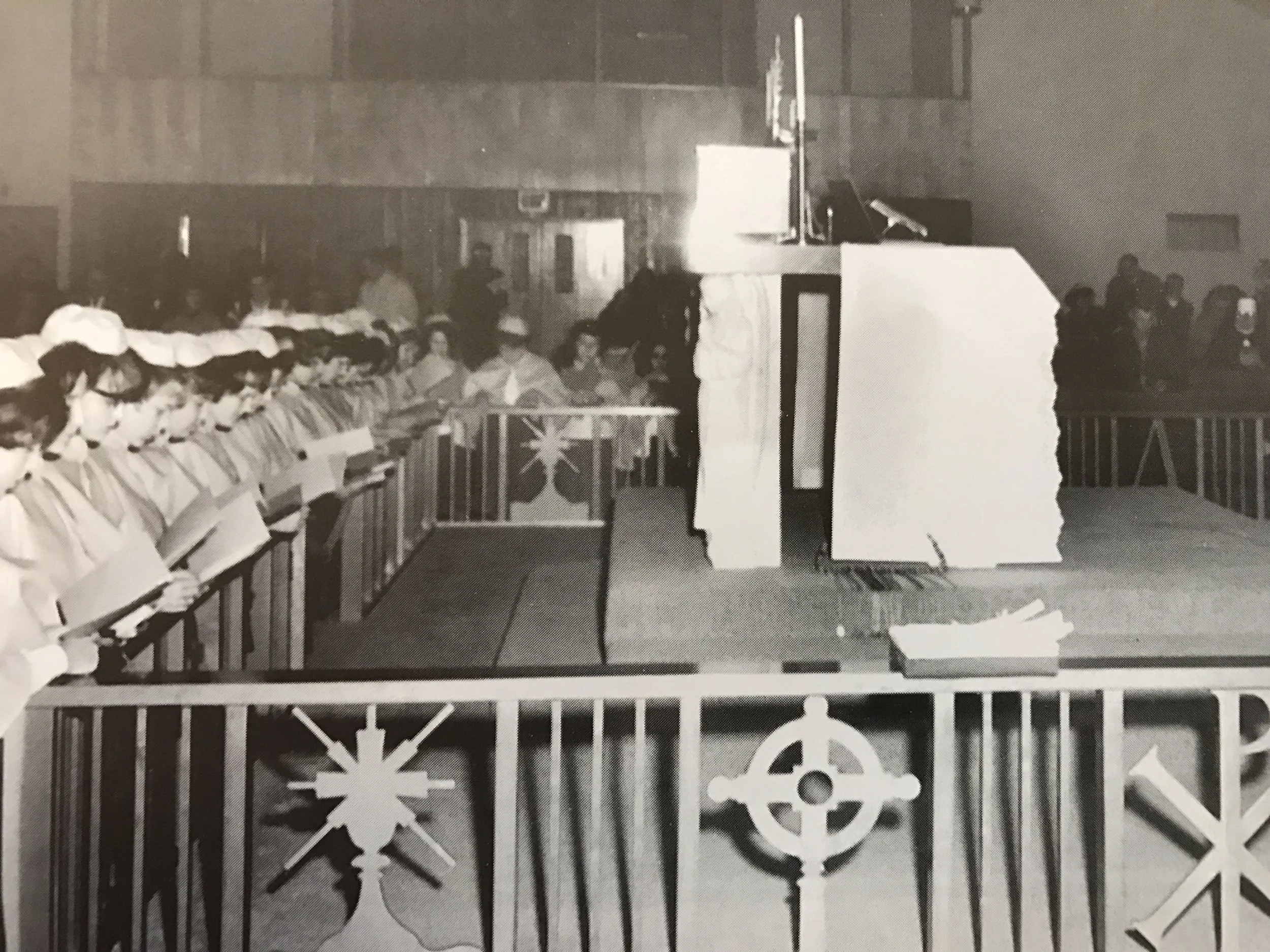Dear Parishioners,
In the course of time, traditions grow up in parishes, sometimes encouraged by priests, nuns, or other lay leaders. Other times, they come from experiences on retreats and other events. All these are part of the life of a parish. Sometimes, these are laudable for they reinforce or remind the people about the norms of the Church Universal. Sometimes, however, these traditions are not what the Church intended or are problematic expressions of faith that confuse the proper roles of those at Mass. Over time, I have been asked by various parishioners about the proper posture/gestures that are part of the Mass, specifically, the “Our Father” and the “Rite of Peace.” In this regard, the new Archdiocesan Liturgical Handbook (ALH) offers some clarification. Below, I have included salient paragraphs to help clarify:
Our Father
1.57.2 During the Our Father, the Roman Missal instructs the priest to “extend his hands” assuming the Orans posture (GIRM 152). This posture is prescribed only for the priest and although it has been adopted by the faithful in some countries after the approval of the Holy See, in the United States it is still a posture assumed only by the priest.
1.57.3 The faithful holding hands during the Our Father is another posture not envisioned or prescribed by the Roman Missal. While this has been adopted within families with small children it should not be considered a normal posture of the Sacred Liturgy. Indeed some may feel uncomfortable if this posture is imposed upon them.
Rite of Peace
1.58.2 The sign of peace is not an act of reconciliation, which has already occurred in the Penitential Act at the beginning of the Mass, nor is it a neighborly greeting. This misunderstanding of the meaning of the sign has led to abuses, such as extended or protracted exchanges of handshakes, hugs, and kisses, which delay the Lamb of God and disrupt the flow of the celebration of the Eucharist.
Understanding these guidelines, it is important to be charitable in all we do. Please, if someone does not follow these guidelines, do not chastise them. Be very careful in your pastoral advice so as not to offend. That being said, the above guidelines are from our Archbishop and the ALH.
Related to other gestures, I have noticed that some faithful lower their heads and strike their breast when the Body and Blood are shown/elevated and the priest says, “do this in memory of me.” According to Fr. Paul Turner, STD::
There has never been a rubric for people striking their breast during the elevation, nor for them to lower their heads. The rubrics are quite scant when it comes to what the people are supposed to do. Devotions have evolved apart from the rubrics. If the people stand for the eucharistic prayer they are supposed to make a low bow while the priest genuflects at the elevations (GIRM 43). (paulturner.org/striking-the-breast-and-bowing)
The General Instructions to the Roman Missal (aka GIRM) in Latin uses the word, “to show,” which then implies that the faithful are to be looking or gazing at the mystery before them. Bowing one’s head, therefore, would seem to be in contradiction to that which is intended by the action in Mass at that moment. So, please, look! Gaze! Let your hearts be filled with the great mystery before you when the priest shows you the precious species of the Eucharist. Do nothing other, for this is primarily a moment of wonder and awe, not of repentance.
Again, charity is first in all we do. Please refrain from being the. “liturgical police” and hunt everyone down that does not follow every gesture perfectly. It is my hope that all will read this letter and come to understand that uniformity in our gestures at Mass offer a more noble and simple liturgy which the Church prescribes. May the Holy Mass be ever more efficacious in our lives, as we all strive to be “led to that full, conscious, and active participation in liturgical celebrations which is demanded by the very nature of the liturgy, and to which the Christian people, ‘a chosen race, a royal priesthood, a holy nation, a redeemed people’ (1 Pet. 2:9, 4-5) have a right and obligation by reason of their baptism.” (Second Vatican Council, Sacrosanctum Concilium 14).
Blessings,
Fr. William Holtzinger
Pastor






